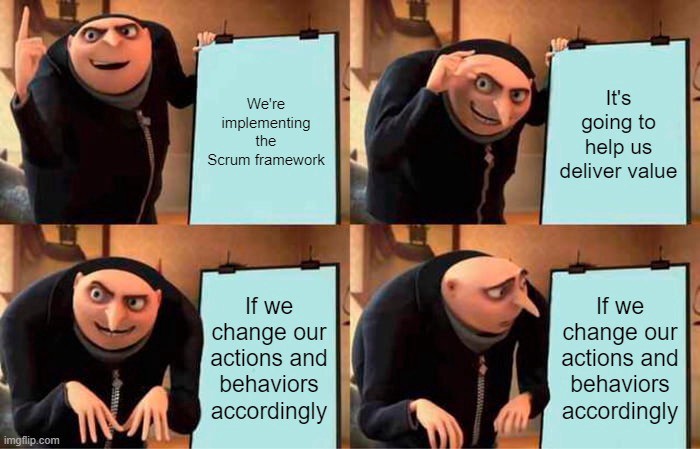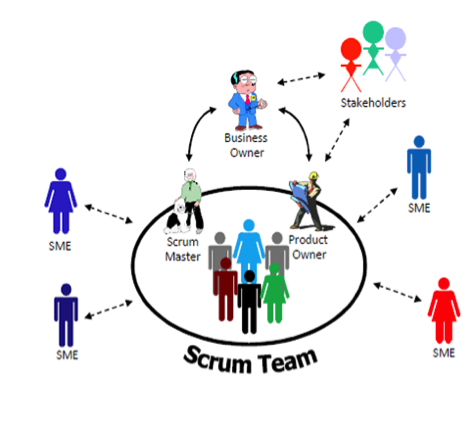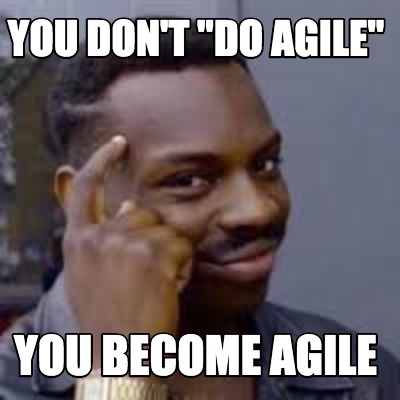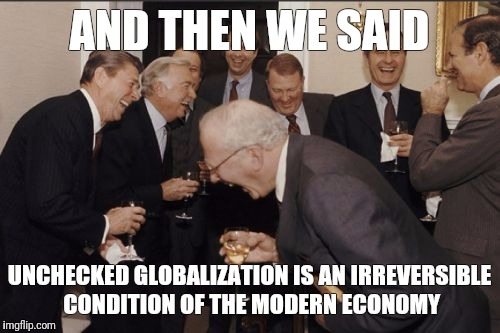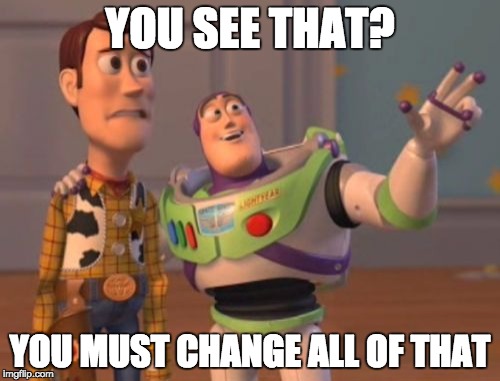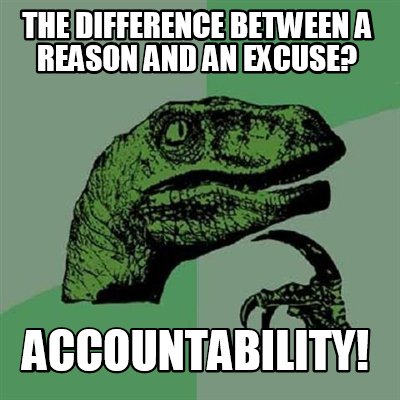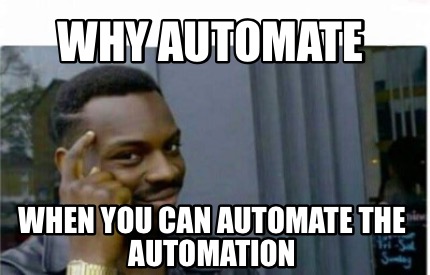If you’ve read my original posts on this space you know I have a good friend, the frog. So this is the story about the frog in the pan and how it has followed me all my working life.
Like the frog, if we are thrown into a pan of boiling water we would jump straight out. We know it’s too much, we know it will kill us immediately.

But, if every day we warm up the pan a little bit, almost unnoticeable, then the frog starts to cook slowly but doesn’t realise as he adapts to the new temperature. The frog will end up cooked but won’t even realise it was time to jump a while back.
We are intelligent people, we think, there’s no way I would allow myself to “cook” (aka burn out). Let me bring you some stats: 79% of the UK workers will end up facing burn out (article here) especially if we consider the environment for more than 2 years. Personal life and office life become blurred and like the frog in the pan we are starting to boil without noticing. Though I do believe we actually notice but we end up without knowing what to do. It’s not so simple to jump out (even though we are in the midst of the great resignation).
Don’t be fooled, change in itself also adds to stress. Will you like your new job? Will you be able to adapt quickly? Will you like your new colleagues? Is it the company for you? What about your boss? Of course all of that would be thought through before you actually say yes but there’s nothing like being there to truly find out what it means for you. Many of us end up preferring to stay “with the evil you know” than jump into the unknown. So you stay.
You try to think about ways you can make the solution better, but before you realise your normal routines kick in and you’re not really changing until you really boil.
Also there is something else that plays quite a big factor here. In some cases yes you are in the wrong company and your values don’t align with the company, your team could be the worst out there or your boss could be an ass. In those cases, by all means, face the jump and get out.
But… hands up if you believe the enemy is actually yourself. You can keep on changing companies but a few months on and you realise you are exactly following the same patterns of your old company. We are our worst enemy. Having the right boss – and I prefer to say line manager – will keep you grounded and challenge you to think about your ways of working so you can indeed make changes that help you long term. But mostly it’s actually self-inflicted.
- We like to be busy – or put another way – no one likes to say I have a lot of free time. It feels you are doing something wrong, that you are not making enough, that mind you, that you’re not cool because everyone else around you is super busy. It’s addictive. Yes, yes it is.
- Ego – I wrote a few times already but ego plays a big unconscious role. You compare yourself, you want to come out on top even if that means working until you boil.
- We don’t have enough examples when we start that show us there is another way. That if you work just smarter and focus on your priorities – without jeopardising your health and your valued relationships that you can still be successful. That feels unachievable, so you follow all the examples you see.
The scary part is, all of what’s driving you to boil – or most of it – is unconscious. It’s routine, it’s in your working DNA.
It will require a lot of strength to break the cycle and implement incremental changes that will lower the temperature of your pan.
Before I dive into what can be done. I will quote something my husband keeps on repeating to me as a mantra:
“My boss makes a dollar, I make a dime, this is why I poop on company time.”
Maybe it’s a bit extreme, but there’s something to think about for sure.
At the end of the day, work is just work. It’s in your hands to make it more enjoyable and bearable.
So what can you do?
- Learn to say no. Not just to others, but to yourself too. Every yes you say, it’s a lot of no’s you are also saying. If I accept this, it means I can’t have dinner with my family. It means I won’t have time to exercise. You get the picture. Saying no is hard. It is (unless your kids are asking you for the 1000th snack in the last 5 minutes). It requires practice. You can start with small steps. Say no to peers who ask your help and when you believe that will jeopardise your goals for the day. Then start by accessing your “yeses” and thinking about what you will lose in that time slot. Can you really fit it in your day?
- Start your day by writing down your priorities. That’s to write, your top 3 things you really need to achieve that day which can be both work or personal. You need to have something measurable at the end of the day.
- Protect your calendar – I wrote at length here (show your calendar who’s the boss) but now you know what are your priorities you need to find slots for them. Ideally they would be done in the morning when your brain is fueled by coffee (unless you’re a tea drinker). Are there meetings in the middle that would get in the way of having a good 2h slot of uninterrupted work? Can you move them or even better do you really really need to go? Cancel them. Have a go, cancel them. See if anyone dies.
- At the end of the day assess what you’ve accomplished. I find myself always doing a stretch of work at the end of the day because I feel I achieved nothing during the day (just meetings). It’s a trap I keep on falling into. Probably if I had the time to retrospect about my day I would find I had already achieved more than I can think of by the end of the day. Really take a few minutes to think of what you’ve achieved and what you can do next day to achieve your top priorities. What failed? What was in the way? Did you need more uninterrupted time to get them done? With this in mind prepare your next day.
- Think about your boundaries. What can you compromise and what can you not? As an example, except if I have to go to the office – I need to either drop my daughter at school or pick her up. It’s really important for her that I’m present and it’s important for me too. I get to chit chat with the other parents and establish relationships which help her as well make friends. I need to show my face. So if any meetings fall on those slots I say no to them. No matter who the requester is, senior or not. Same is valid with the bedtime routine. The answer is no. I’m not willing to compromise that. Maybe for you it’s a slot for daily exercise. Whatever it is and it can be multiple things. Think about them as they will act as your compass as to when you are taking too much.
- Once in a while (monthly, quarterly, even daily) assess how it’s going. How do you feel? How many days of utter stress and feeling out of control did you have? What are the things you can do to help you out? Do you need a day off away from work and family to think about what you can do to feel more grounded and healthier? Then take it! It might feel like 1 day’s loss and you’ll be even more behind where you wanted to be, but you’ll gain so much more. Maybe you’ve reverted back to saying too many “yeses”. Maybe you are not delegating enough.
- Setting time aside for the things you really enjoy. We all have hobbies and things we really enjoy doing. Whatever those are, save time to do them. Ideally you would have time for them even during the week too. Even if it’s 15m, it can be totally refreshing for your mind. Sometimes I get 15m aside to read during my quick lunch break and those 15m give me a lot of energy to face the rest of the afternoon, not to mention they lift my mood (I obviously don’t read the news).
- Work out what works for you. There’s no one rule that fits all. You need to find what are the things you can do to help you live a more balanced life. Can well be asking for help – either for home commitments or work. We are not machines and it’s ok to slow down. If you are not boiling down you will be more productive at work and home. One single fresh idea is worth many tired ones. Try one of your ideas and see how it works. If it doesn’t work, go back to the drawing board and think of what could work. Finding what doesn’t work in itself is quite powerful too.




